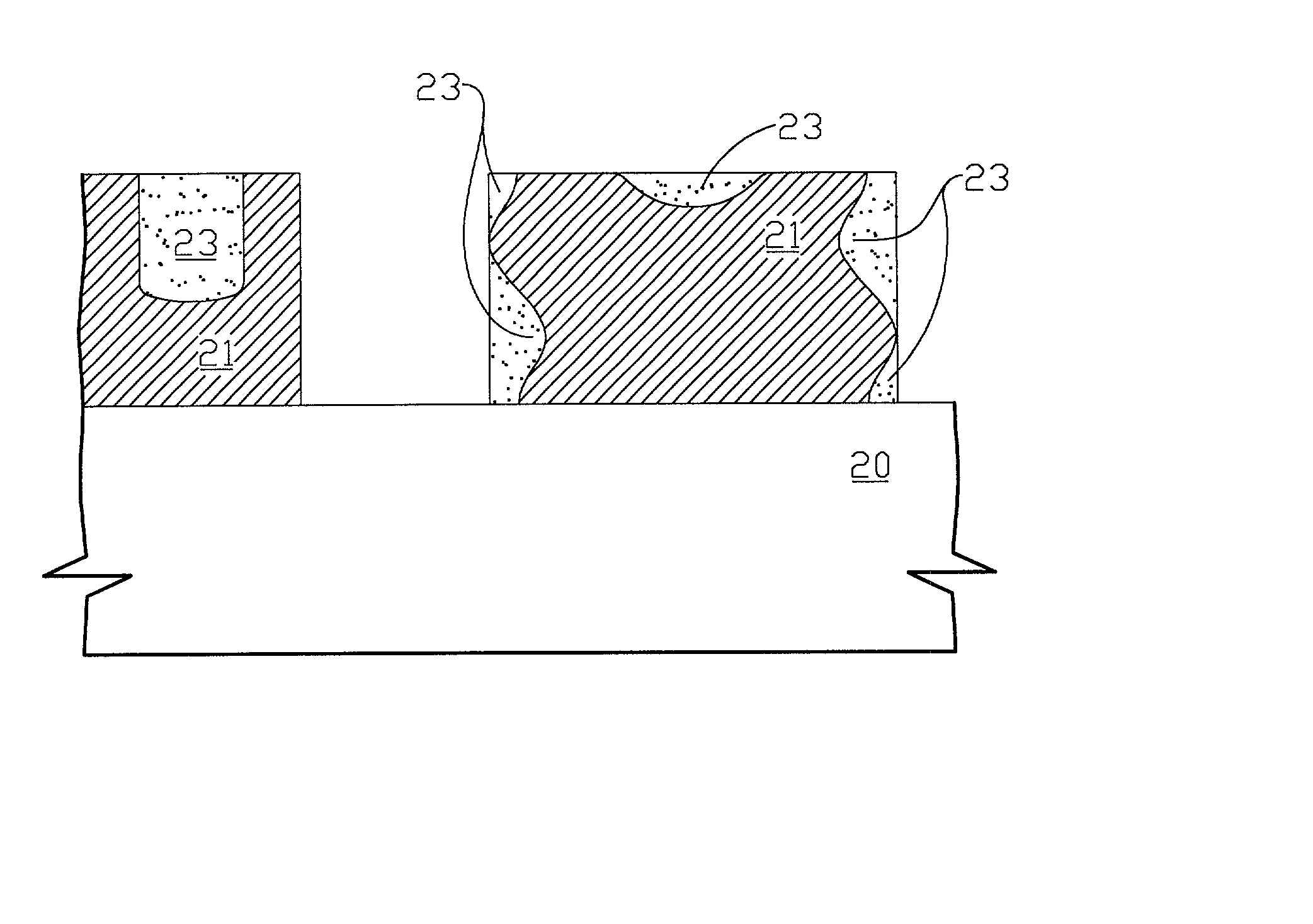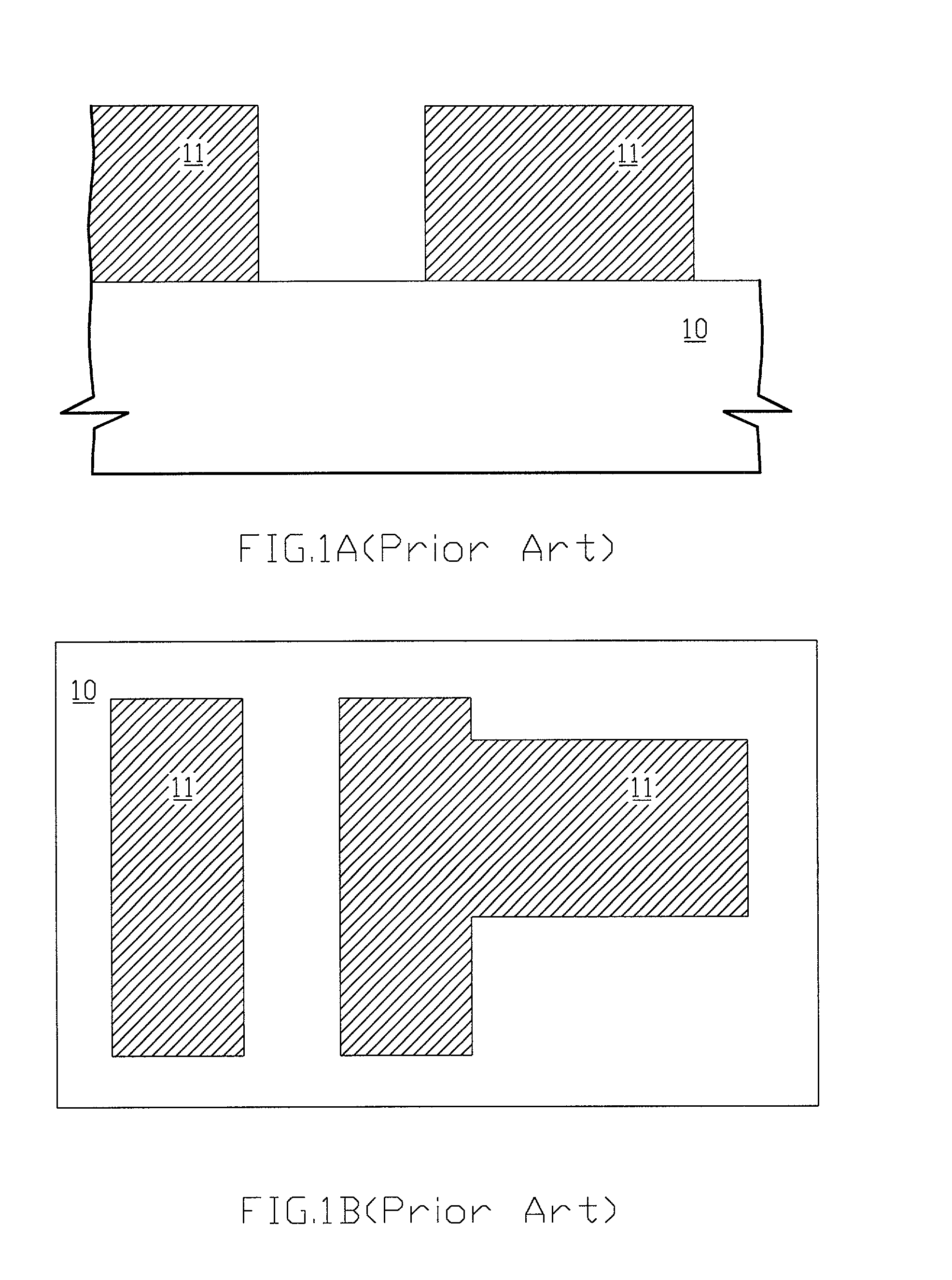Method for reducing line edge roughness of photoresist
a technology of photoresist and line edge roughness, which is applied in the direction of photomechanical equipment, instruments, and photosensitive material processing, etc., can solve the problems of non-uniform distribution of polymers which are composition of photoresist, non-smooth surface and line width variation, and limited practice in semiconductor fabrication, etc., to achieve the effect of reducing the roughness of the line edge of the photoresis
- Summary
- Abstract
- Description
- Claims
- Application Information
AI Technical Summary
Benefits of technology
Problems solved by technology
Method used
Image
Examples
Embodiment Construction
[0019] Because choice of photoresist material, baking time and baking temperature are strongly related to whole process for transferring pattern from mask into photoresist, none of them could be decided only in accordance with requirement for preventing line edge roughness. Thus, this present invention reduces line edge roughness of photoresist from another approach: First, still use conventional semiconductor fabrication to form photoresist pattern which has line edge roughness such as trenches, non-smooth surface, and line width variation. Then, after pattern is transformed into photoresist, fills trenches (include holes) in photoresist by an additional material, so let non-smooth surface and line width variation are reduced or even eliminated. Finally, uses both photoresist and additional material as a mask to transfer pattern into semiconductor substrate.
[0020] In short, conventional semiconductor fabrication usually directly uses photoresist as the mask used by etch process and...
PUM
| Property | Measurement | Unit |
|---|---|---|
| roughness | aaaaa | aaaaa |
| thermosetting | aaaaa | aaaaa |
| thermoplasticity | aaaaa | aaaaa |
Abstract
Description
Claims
Application Information
 Login to View More
Login to View More - R&D
- Intellectual Property
- Life Sciences
- Materials
- Tech Scout
- Unparalleled Data Quality
- Higher Quality Content
- 60% Fewer Hallucinations
Browse by: Latest US Patents, China's latest patents, Technical Efficacy Thesaurus, Application Domain, Technology Topic, Popular Technical Reports.
© 2025 PatSnap. All rights reserved.Legal|Privacy policy|Modern Slavery Act Transparency Statement|Sitemap|About US| Contact US: help@patsnap.com



